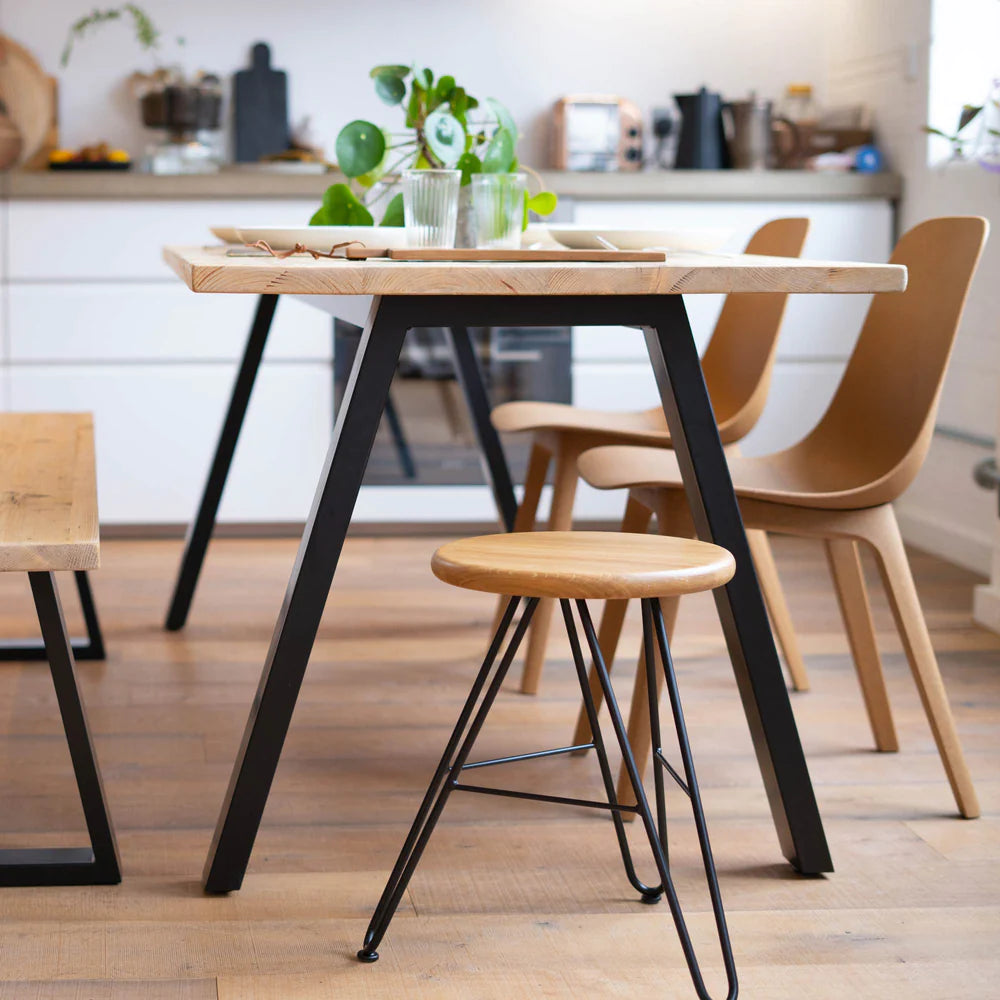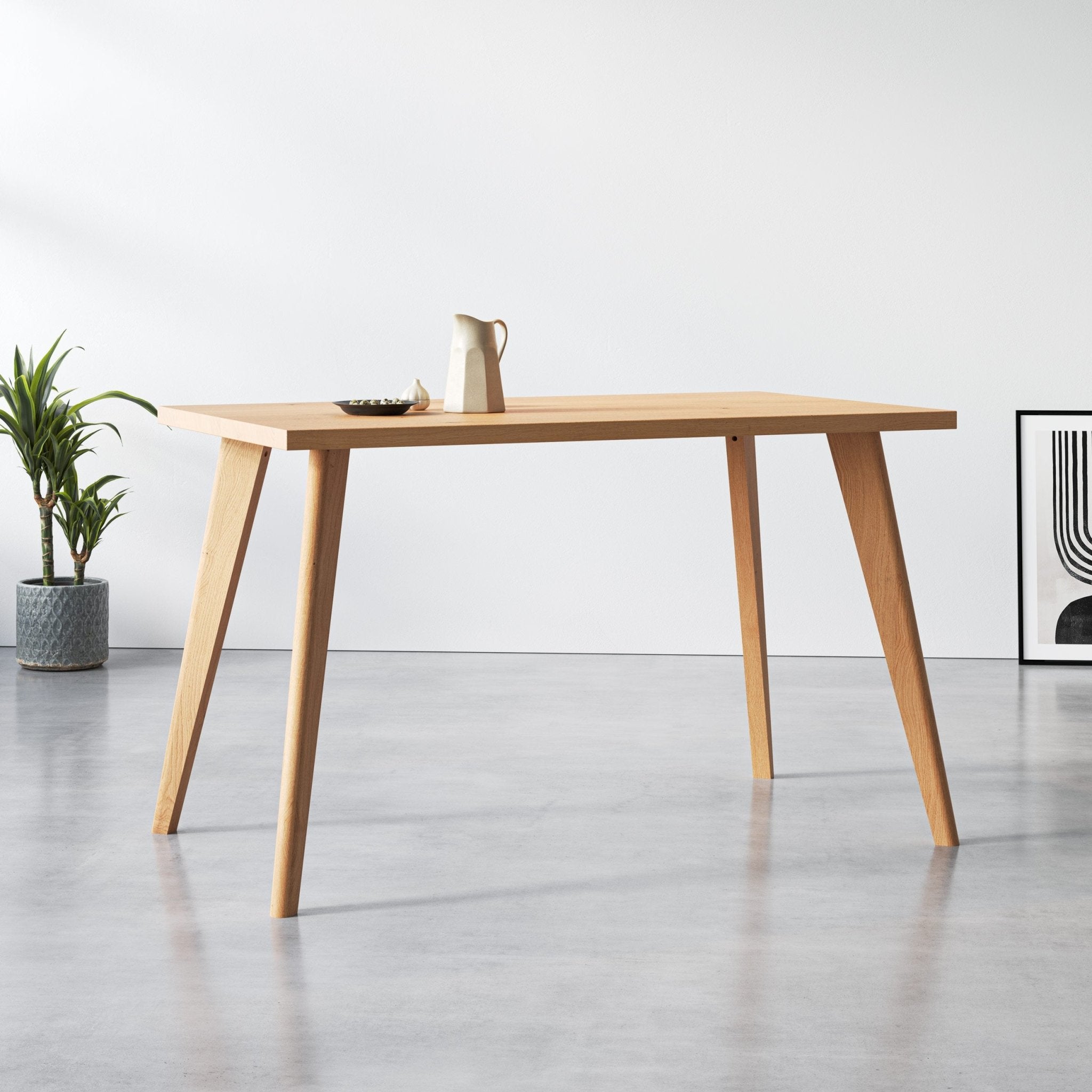Checking Out the Various Sorts Of Table Legs Wood for Your Eating Area
The selection of eating table legs wood can greatly impact both the visual and functional top qualities of your eating room. Strong timber options, such as oak and walnut, supply a timeless appearance with unparalleled toughness, while crafted wood alternatives provide ingenious styles that simulate the splendor of natural grains.
Solid Wood Options

Unlike engineered products, strong timber is less susceptible to warping and damage over time when effectively maintained. Each piece of solid timber is distinct, showcasing individual attributes that include to the appeal and personality of the eating table.
Furthermore, strong timber can be completed in countless means, ranging from natural oils to stained coatings, allowing house owners to personalize their furniture to match their style. In recap, picking solid timber for dining table legs not only ensures architectural stability however also boosts the aesthetic allure of the dining location, making it a beneficial investment for any type of home.
Engineered Wood Alternatives

Plywood, built from several layers of wood veneer, is specifically strong and steady, making it an outstanding choice for dining table legs. Its split structure enables it to withstand changes in moisture and temperature level much better than conventional strong wood. MDF, on the various other hand, offers a smooth surface for painting or veneering, making it possible for developers to achieve a sleek appearance while maintaining architectural integrity.
Particleboard, frequently used in economical options, gives respectable stamina and is light-weight, making it simpler to take care of. It may not be as sturdy as plywood or MDF. It is important to take into consideration the intended use and preferred aesthetic when choosing engineered timber alternatives. These materials not only enhance the performance of eating spaces however additionally permit higher style adaptability, making sure that modern and traditional designs can coexist harmoniously.
Reclaimed Wood Includes
Redeemed timber offers an unique blend of sustainability and character, making it an increasingly preferred choice for dining table legs. Sourced from old barns, factories, and other frameworks, redeemed timber symbolizes a history that new materials merely can not reproduce. Each item lugs its very own story, noted by distinct blemishes, knots, and differing grain patterns, which contribute to a table's one-of-a-kind visual charm.
Along with its aesthetic appeal, recovered timber is an eco-friendly choice. By repurposing formerly made use of products, it lowers the demand for brand-new lumber, thus assisting to preserve woodlands and reduce waste. This straightens with an expanding customer preference for sustainable techniques in furniture.
Furthermore, redeemed wood is commonly much more durable than freshly collected timber due to its age. The all-natural drying procedure that redeemed wood undertakes cause a denser and stronger product, making it less at risk to bending and splitting. This enhances the long life of dining tables, permitting them to hold up against the rigors of day-to-day usage.
Softwood vs. Hardwood
When choosing eating table legs, recognizing the distinctions in between softwood and wood is essential for attaining both practical and aesthetic objectives. They generally show an even more rustic appearance, making them suitable for country-style or laid-back dining spaces.
On the other hand, hardwoods, sourced from deciduous trees like cherry, maple, and oak, are renowned for their density, strength, and toughness. The elaborate grain patterns and abundant colors of hardwoods offer a ageless and advanced article source charm, making them excellent for official dining settings. While hardwoods have a tendency to be much more pricey and much heavier, their strength versus damage often justifies the financial investment.
Ultimately, the selection in between softwood and wood for eating table legs must straighten with your design vision, usage demands, and budget plan, making sure that your dining room mirrors your personal design while continuing to be useful gradually.

Surfaces and Therapies
The aesthetic charm and durability of eating table legs can be dramatically boosted via different coatings and therapies. These processes not only secure the timber from damage but also raise its appearance, allowing it to complement diverse indoor designs.
One typical therapy is tarnishing, which passes through the wood and enhances its natural grain while adding color. Spots supply a rich, elegant look, allowing house owners to match their furniture with existing design. Alternatively, clear coatings such as polyurethane or varnish produce a protective layer without modifying the timber's original shade, guaranteeing durability versus deterioration.
Additionally, all-natural oils, like tung or linseed oil, nurture the timber and use a refined luster, all check my source while being eco-friendly. These oils permit the surface to breathe, stopping moisture build-up and possible bending.
For those seeking a rustic beauty, weather-beaten or distressed surfaces can be put on create an aged appearance, adding character to the item. Eventually, the selection of treatments and surfaces depends on individual choice, desired aesthetic appeals, and the details wood kind, making it important to take into check out this site consideration these variables when selecting table legs for your space.
Verdict
Finally, the selection of table leg materials considerably affects both the functional and visual facets of a dining space. Solid woods, crafted options, and reclaimed choices each deal distinct benefits, catering to various choices and demands. Comprehending the distinctions between hardwoods and softwoods, along with proper finishes and therapies, permits educated decision-making. Eventually, the selection of timber kind need to align with wanted style, toughness, and environmental factors to consider, enhancing the overall dining experience.
The selection of eating table legs wood can greatly impact both the practical and visual top qualities of your eating room - Dining Table Legs Wood. Solid wood options, such as oak and walnut, provide a traditional look with unequaled durability, while crafted wood alternatives offer innovative designs that imitate the splendor of all-natural grains. Strong timber offers a classic high quality that can boost the general style of a dining room. Each piece of strong timber is one-of-a-kind, showcasing individual characteristics that include to the charm and character of the eating table
In addition, reclaimed wood is often extra sturdy than newly collected wood due to its age.
Comments on “Add Stamina and Beauty Making Use Of Strong Dining Table Legs Wood Pieces”